Museum Curator:
Dr. Jason Gibbs
Associate Professor
Department of Entomology
University of Manitoba
Jason.Gibbs@umanitoba.ca
The University of Manitoba campuses and research spaces are located on original lands of Anishinaabeg, Ininiwak, Anisininewuk, Dakota Oyate, Dene and Inuit, and on the National Homeland of the Red River Métis. More
University of Manitoba
Winnipeg, Manitoba Canada, R3T 2N2
The J. B. Wallis / R. E. Roughley Museum of Entomology (formerly the J.B. Wallis Insect Museum) is one of the largest insect collections in Western Canada. The collection contains more than 2 million specimens, with about 500,000 in specimen drawers and the remainder in the wet collection. The museum is the heart of the Entomology Department at the University of Manitoba and is critical to teaching, research, and extension in entomology in Manitoba.
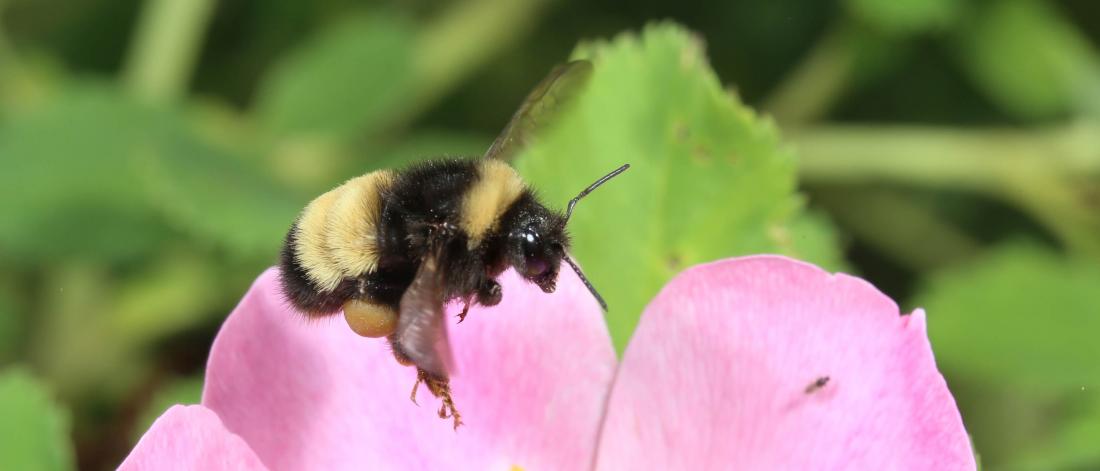
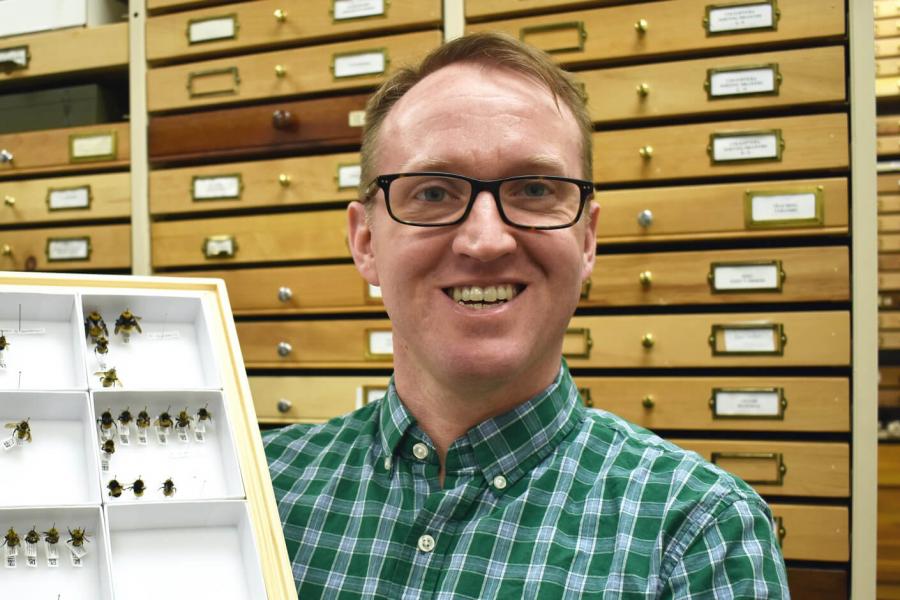
Museum Curator:
Dr. Jason Gibbs
Associate Professor
Department of Entomology
University of Manitoba
Jason.Gibbs@umanitoba.ca
The museum welcomes requests for specimen loans and would be happy to host visiting students and researchers. Approximately 300,000 specimens have been databased and are accessible here. These data and availability of other specimens are available upon request.
Please contact Dr. Gibbs, the museum curator, for loan and visit information.
The origin of the J.B. Wallis/R.E. Roughley Museum of Entomology coincided with the arrival of Alvin Valentine Mitchener (1888–1962) at the Manitoba Agriculture College in about 1919. Mitchener began his days at the university in the Department of Horticulture, but he founded the Department of Entomology sometime during 1921. Mitchener was a stickler for detail, and he kept records of every insect enquiry that came to his attention and assembled a large collection of entomological extension bulletins from all over North America. Each enquiry was recorded on a separate slip of paper, all of which are still housed in the Department of Entomology today, along with the data he gathered on honey flow. Although there is no indication he was a dedicated collector, he prepared many of the insects submitted by the public and deposited them in curated cabinets. He also appears to have gleaned specimens submitted by students for their insect collections.
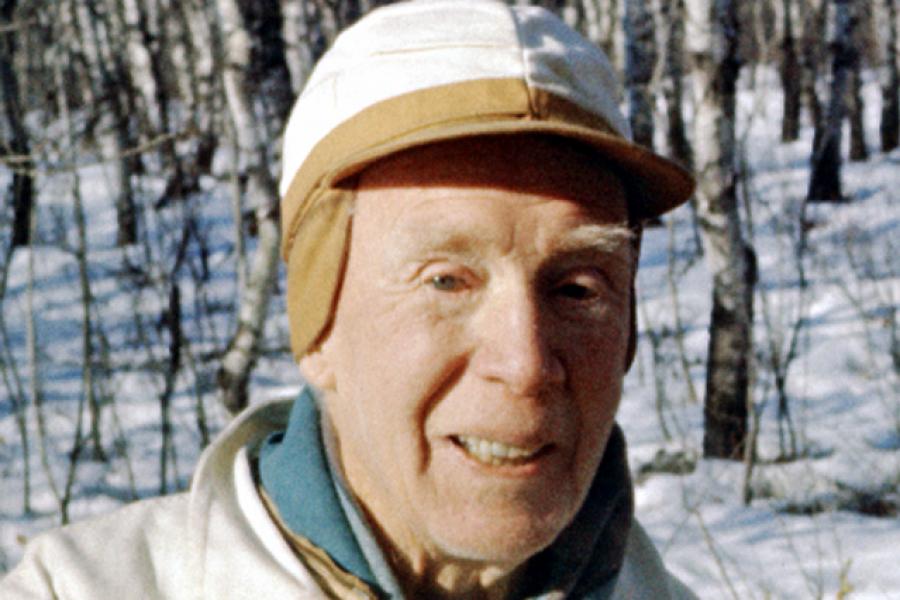
The Mitchener years were a period of slow growth for the collection, and it was not until John Braithwaite Wallis (1876–1962) arrived on the scene that the museum became a focus of curatorial intensity. J.B. was a teacher, principal, and later, a school superintendent in the Winnipeg school system. He had a passion for insects, especially beetles, and collected avidly in many parts of the province, and even participated in the Northern Insect Survey in the early years of his retirement. J.B. was a specialist in water beetles and tiger beetles, but he collected quite broadly in his travels across the insect world. He wrote a monograph on the tiger beetles of Canada, and the Museum retains an excellent collection of these attractive beetles. He interacted extensively with the Criddle family at Aweme, and with Ralph Durham Bird (1901–1972), an entomologist and ecologist in Brandon. J.B. was hired at one point by the Department at the astounding wage of $1.00 per day to assemble a representative collection of Manitoba insects. This collection was housed for many years in an old silo, until it was moved into the departmental undergraduate teaching lab in the new Animal Science Building. This collection still graces the back wall of the lab, having had only some of the faded Lepidoptera replaced. It is rather amazing to see our students today standing along the back of the lab, noting the diversity of the collection and the ancient dates on many of the specimens. Along the way, J.B. added a large number of specimens to the departmental museum, and he spent many long hours curating the collection in hand-constructed, wooden drawers and cabinets. Thousands of specimens collected by Wallis, the Criddles and R.D. Bird are still housed in the Museum. It was a tribute to his contributions that the museum was dedicated in his honour on 22 September, 1988.
Arthur Grant Robinson (1916–1992) assumed many of the extension and curatorial responsibilities when he was hired in the Department in 1953. Grant was primarily interested in aphid taxonomy, and he collected widely in Manitoba throughout his career and into retirement. By the time he decided to disperse his aphid collection, he had assembled approximately 30,000 slides, on many of which were mounted two or three specimens. One third of the slides went to the Canadian National Collection, one third went to the Smithsonian Institution, and one third remained in the Department, a valuable resource for this enormously important group of insects.
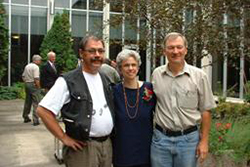
In 1978, the collection was estimated to contain about 98,000 specimens, largely collected by J.B. Wallis and A.G. Robinson. Terry Galloway and Rob Roughley (1950–2009) were hired in 1977 and 1982, respectively, and their collecting and curatorial efforts, along with contributions from many of the undergraduate and graduate students in the Department, resulted in a period of rapid growth for the Museum. By 1992, the Museum was estimated to house about 300,000 specimens. This growth resulted in serious crowding, and workspace in the Museum became limiting. Space became critical when we acquired the collection from the Agriculture Canada Research Station on campus at the end of Dafoe Road. This was a great addition to the Museum because it included all of Gord Ayre's ants, the cutworms he and Bob Semple had collected and reared, and also included specimens from the old Canada Department of Agriculture Lab in Brandon. Many of these specimens are of considerable historical importance, collected by N. Criddle and R.D. Bird. All the cabinetry and drawers from Agriculture Canada were squeezed into the Museum, where it became almost impossible to move around, let alone to work productively.
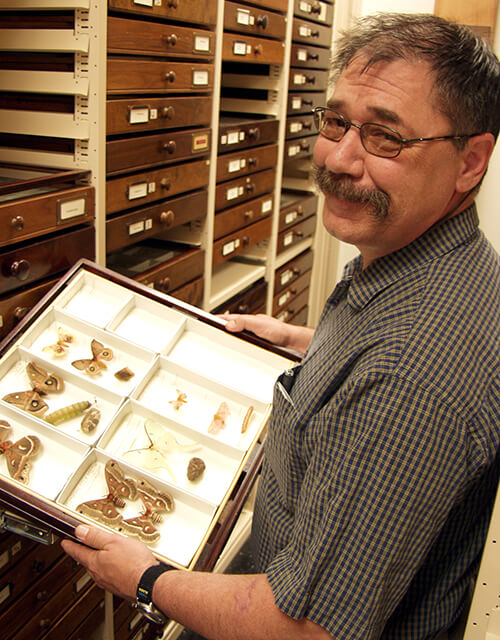
Something had to be done to ease the pressure on Museum space, and Rob Roughley finally spear-headed a proposal submitted to the Canadian Foundation for Innovation to expand and modify the museum facilities, and to introduce a computer-based bar-code system so information for all specimens could be stored electronically. This system would ultimately lead to universal availability of shared data among museums and taxonomists around the world. Ariel Patio was the first person hired to set up the bar-code system and begin the arduous task of databasing specimens in the collection. Data for more than 200,000 specimens have been entered so far. Museum floor space was doubled by renovating the old radioactive lab, a fume hood and wet lab space were modified, and drawers were transferred from the old wooden cabinets to high-rise steel rails, vastly increasing capacity for growth.
And grow the Museum did. Adding to his extensive research collection of water beetles, Rob initiated several biodiversity projects in grasslands and in northern Manitoba, at Churchill. In 1993, Terry began a long-term programme on biodiversity of ectoparasites infesting wildlife in Manitoba. We estimate the holdings of the Museum to have exceeded 2,500,000 specimens, making the Museum among the largest in Canada.
Rob Roughley then participated in a large collaborative CFI proposal in which Canadian university collections of plants and animals would be electronically connected by their growing databases. Although Rob suffered a stroke in 2008, his initiative in the Manitoba component of the project was carried through. Rob was fortunate to see the funding provided for this endeavor, which has resulted in the formation of CANADENSYS, but he died suddenly in the fall of 2009, just as the project was beginning to gain momentum.
Barb Sharanowski was hired as the new taxonomist in 2010 and brought a range of new skills to the position of curator for the Museum. Her research on parasitic Hymenoptera included classical taxonomy but extended into molecular systematics and phylogenomics. Barb was the first hymenopteran specialist associated with the museum. In addition, funding from CFI and from Growing Forward resulted in a part-time museum technician, Phil Snarr, and a data-entry specialist, Gwen Band, being hired to promote new initiatives and growth in the museum proceeded unhindered. A major addition to the museum under Barb’s time as curator was an advanced insect imaging system. The imaging system was compiled by Jordan Bannerman, an instructor in the Department, with financial support from the Faculty of Agricultural and Food Sciences Endowment Fund and the Western Grains Research Foundation. This imaging system has proven invaluable for producing high quality insect images to support research, teaching and extension activities within the Department. Barb took a new position at the University of Central Florida but remains an adjunct professor in the department. Following her departure, Terry Galloway resumed duties as acting curator.
In December of 2016, Jason Gibbs, also a hymenopterist with a focus instead on wild bees, took on the position of curator for the museum. Since his arrival, the bee collection has grown by more than 60,000 specimens, largely through biodiversity survey efforts of his students. Knowledge of the provincial bee fauna has grown extensively with more than 100 new provincial records detected. He transferred the collections database to modern SQL format and added tens of thousands of new records to the database. Jason’s research also involves molecular systematics. In conjunction with Indigenous Scholar and assistant professor Kyle Bobiwash, he obtained new CFI funding to build the capacity of the Department’s molecular facilities. Each year he continually renews the Museums drawer supply and promptly fills them with new acquisitions. With Jordan Bannerman and Terry Galloway, he hopes to revitalize the wet collection through the replacement of old vials and ethanol.
Through these times of change, museum activities relied heavily on technical support on many levels. Dave Holder has been a key technician in the department for more than 30 years, and has often served many important roles in the museum. He has built, repaired and maintained infrastructure and guaranteed that shipments of borrowed specimens were carefully packed and shipped to source museums. He developed sufficient taxonomic expertise to assist in identification of certain groups of insects and in training and helping graduate students with their identifications.
Donations have always been an important part of the Museum acquisitions. For example, John Christie, a former undergraduate student in the Department of Entomology and a licensed trapper, has contributed ectoparasites, especially fleas, to the collection for decades. His brother William donated a large butterfly collection from Red Rock Lake, which spanned decades of effort. Richard Westwood has donated butterflies and moths, as well as provided his curatorial expertise on the group. Bob Wrigley and Todd Lawton have donated thousands of specimens over many years, and have supplemented the collection of tiger beetles. The Museum recently obtained the extensive collections of William Preston and Walter Krivda. It is hard to beat the raw enthusiasm of young collectors, and those students striving to obtain that elusive A+. Collections submitted in our senior level course, Manitoba Insect Fauna, always turn out to be good as gold as a source of interesting records for the province. In 2011, Patrick Dean Terenchuk donated professionally mounted specimens that he had prepared or purchased as a hobby. The graduate students sold many of these specimens to the public for Christmas, which helped raise money for a new imaging system in the museum and provided gifts to foster enthusiasm for entomology for young and old alike.
At the beginning of a new era for the Museum, the name was officially changed in 2011 to the J.B. Wallis/R.E. Roughley Museum of Entomology, and we held an informal dedication ceremony on 27 March, 2012. The official acronym changed from JBWM to WRME (affectionately pronounced Worm-ee). The WRME continues to grow and support the three essential pillars in the Department, i.e., research, teaching and extension.